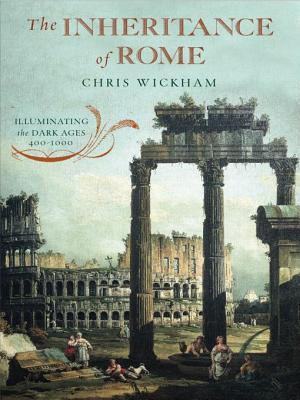
The Inheritance of Rome
Illuminating the Dark Ages, 400-1000
کتاب های مرتبط
- اطلاعات
- نقد و بررسی
- دیدگاه کاربران
نقد و بررسی

Starred review from June 15, 2009
Building on the foundation he laid in Framing the Early Middle Ages
, award-winning Oxford historian Wickham constructs a magisterial narrative of the political, economic, cultural and religious fabrics that constituted the crazy quilt of Europe's Dark Ages. Negating what he calls a common “teleological” view of this period as the source of European nations and a modern sense of European identity, he draws on archeological evidence and rich historiographical methods Wickham challenges standard views of the early Middle Ages as barbarous and bereft of political and cultural structure, and recreates a stunning portrait of the breakup of the Roman Empire and its consequences for Europe. Wickham looks at the immediate post-Roman polities in Gaul, Spain and Italy; the history of Byzantium, the Arab caliphate and its 10th-century successor states, including Muslim Spain; the Carolingian Empire and its successors and imitators, notably Russia and Scotland. Under this narrative layer lies a focus on the accumulation of wealth, the institutionalization of politics and the culture of the public. Wickham's achievement contributes richly to our picture of this often narrowly understood period. Maps, illus.

July 15, 2009
A work such as this is more than welcome in light of its inclusion of all the major players relating to the fall of Rome. Too often, previous works on this topic tilted toward Rome or Constantinople without recognizing their symbiotic relationship. Wickham attempts, with some success, to combine social history and political history by avoiding the confusing divisions that have developed over the centuries regarding the fall of Rome. His success appears to be largely due to his keeping religious history at bay; in other words, placing it within the other boundaries and frameworks he has already set. For example, he seeks to look at various regions, like Britain, as entities standing on their own and within their own historical terms and their own reality. Thus there are four parts to the work, each having its own chronology and geographical region: "The Roman Empire and Its Breakup, 400550"; "The Post-Roman West, 550750"; "The Empires of the East, 5501000"; and "The Carolingian and Post-Carolingian West, 7501000." Within these four areas there are a total of 23 subchapters. VERDICT While these divisions are not revolutionary, Wickham has created what could be called a very readable, historical textbook for the period and readers can drop in at will. Recommended for students of Roman history and the early Middle Ages.Clay Williams, Hunter Coll., New York
Copyright 2009 Library Journal, LLC Used with permission.

Starred review from August 1, 2009
Though he ends his narrative more than 400 years earlier than does Lars Brownworth in Lost to the West (2009), Wickham casts his nets much more widely, examining the persistence of Roman culture not only in Byzantium but also in the Arab caliphate and in the diverse kingdoms of the post-Roman West. With the rigor that won him praise for Framing the Middle Ages (2005), Wickham punctures the self-congratulation of fifteenth-century historians who lionized Renaissance intellectuals for reclaiming the wisdom of antiquity by breaking through the supposed stupor of the Dark Ages. The rulers of the early Middle Ages, Wickham argues, actually perpetuated many Roman traditions and did so in ways that merit attention on their own terms. Readers see, for example, how the Roman conception of public life continued to inform the political lives of various post-Roman regimes, lending legitimacy to the reforming ambitions of Carolingian kings and providing the political substrata Moslem conquerors needed to establish their own extensive tax system in southern Spain.(Reprinted with permission of Booklist, copyright 2009, American Library Association.)

























دیدگاه کاربران